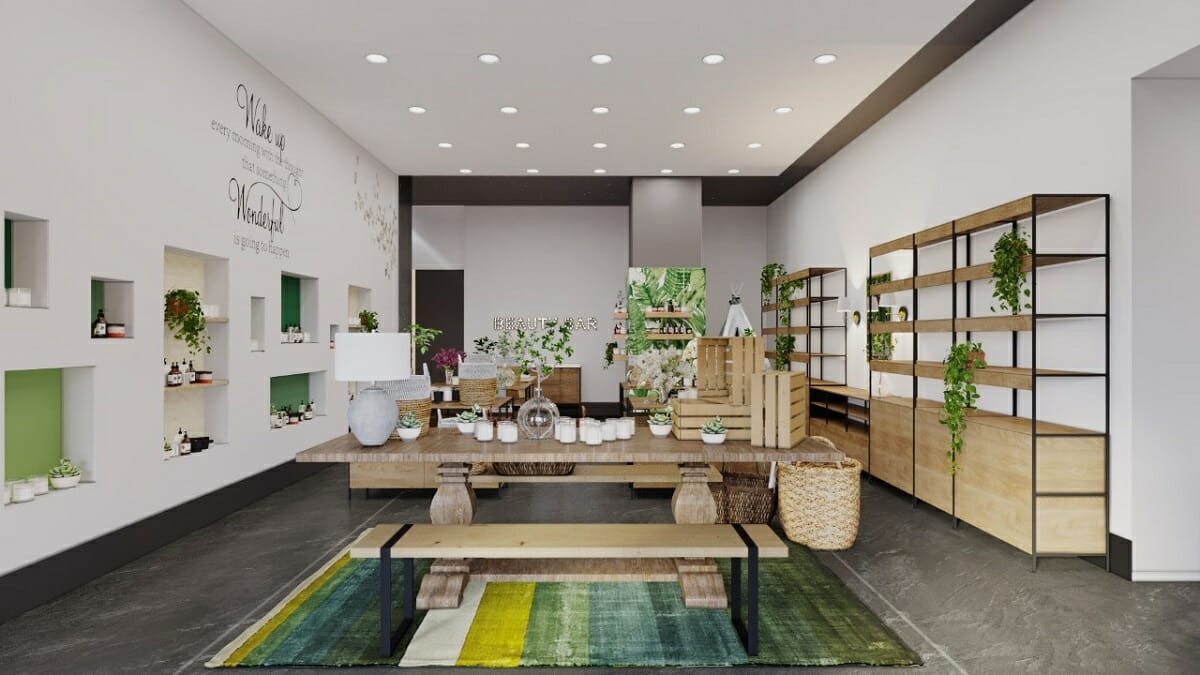Image Source: Google
Retail design is a crucial aspect of any successful brick-and-mortar store. It involves creating an environment that not only showcases products but also immerses customers in a unique and memorable shopping experience.
The best retail designers play a key role in shaping the way consumers interact with a brand, influencing their purchasing decisions, and ultimately, driving sales. Let's explore the art of retail design and how designers create immersive shopping experiences.
The Principles of Retail Design
1. Customer-Centric Approach
- Retail designers prioritize understanding the target audience and tailoring the store environment to meet their needs and preferences.
- By putting the customer at the center of the design process, designers can create a more personalized and engaging shopping experience.
2. Brand Consistency
- Consistent branding across all touchpoints, including store design, helps reinforce brand identity and build brand loyalty.
- Retail designers carefully integrate brand elements such as colors, logos, and messaging into the store design to create a cohesive and recognizable brand image.
3. Visual Merchandising
- Visual merchandising is a key aspect of retail design that involves displaying products in a way that attracts customers and encourages sales.
- Retail designers use techniques such as product grouping, eye-catching displays, and strategic lighting to showcase merchandise effectively and create a visually appealing store layout.
The Elements of Immersive Shopping Experiences
1. Store Layout and Flow
- Retail designers carefully plan the store layout to ensure a seamless flow of foot traffic and guide customers through the store in a deliberate manner.
- Creating designated spaces for different product categories or experiences can help customers navigate the store more easily and discover new products.
2. Sensory Elements
- Engaging multiple senses, such as sight, sound, and smell, can enhance the overall shopping experience and leave a lasting impression on customers.
- Retail designers incorporate elements like ambient music, pleasant scents, and interactive displays to create a sensory-rich environment that captivates customers.
3. Interactive Technologies
- Integrating interactive technologies such as touchscreens, virtual reality, and augmented reality can elevate the shopping experience and provide customers with an immersive and engaging way to interact with products.
- These technologies offer opportunities for customers to explore products in more depth, customize their choices, and make informed purchasing decisions.
Case Study: Apple Stores
Apple stores are renowned for their innovative retail design and immersive shopping experiences. Let's look at how Apple incorporates retail design principles to create a unique and engaging environment for customers:
1. Customer-Centric Approach
- Apple stores are designed with the customer in mind, featuring open layouts that invite customers to explore and interact with products.
- The Genius Bar provides personalized assistance and support, enhancing the overall customer experience.
2. Brand Consistency
- Apple stores consistently reflect the brand's minimalist aesthetic and focus on simplicity and functionality.
- From the store architecture to the product displays, every element embodies Apple's brand identity.
3. Interactive Technologies
- Apple stores showcase the latest technologies through interactive product demos and workshops that educate and inspire customers.
- Features like the Apple Store app and Apple Pay enhance convenience and streamline the shopping process for customers.
Conclusion
Retail design is a dynamic and creative field that plays a vital role in shaping the way consumers experience and interact with brands. By incorporating principles such as customer-centricity, brand consistency, and visual merchandising, retail designers can create immersive shopping experiences that resonate with customers and drive sales.
Through innovative store layouts, sensory elements, and interactive technologies, designers can captivate customers and leave a lasting impression that sets a brand apart. The art of retail design continues to evolve, offering endless possibilities for creating memorable and immersive shopping experiences.

